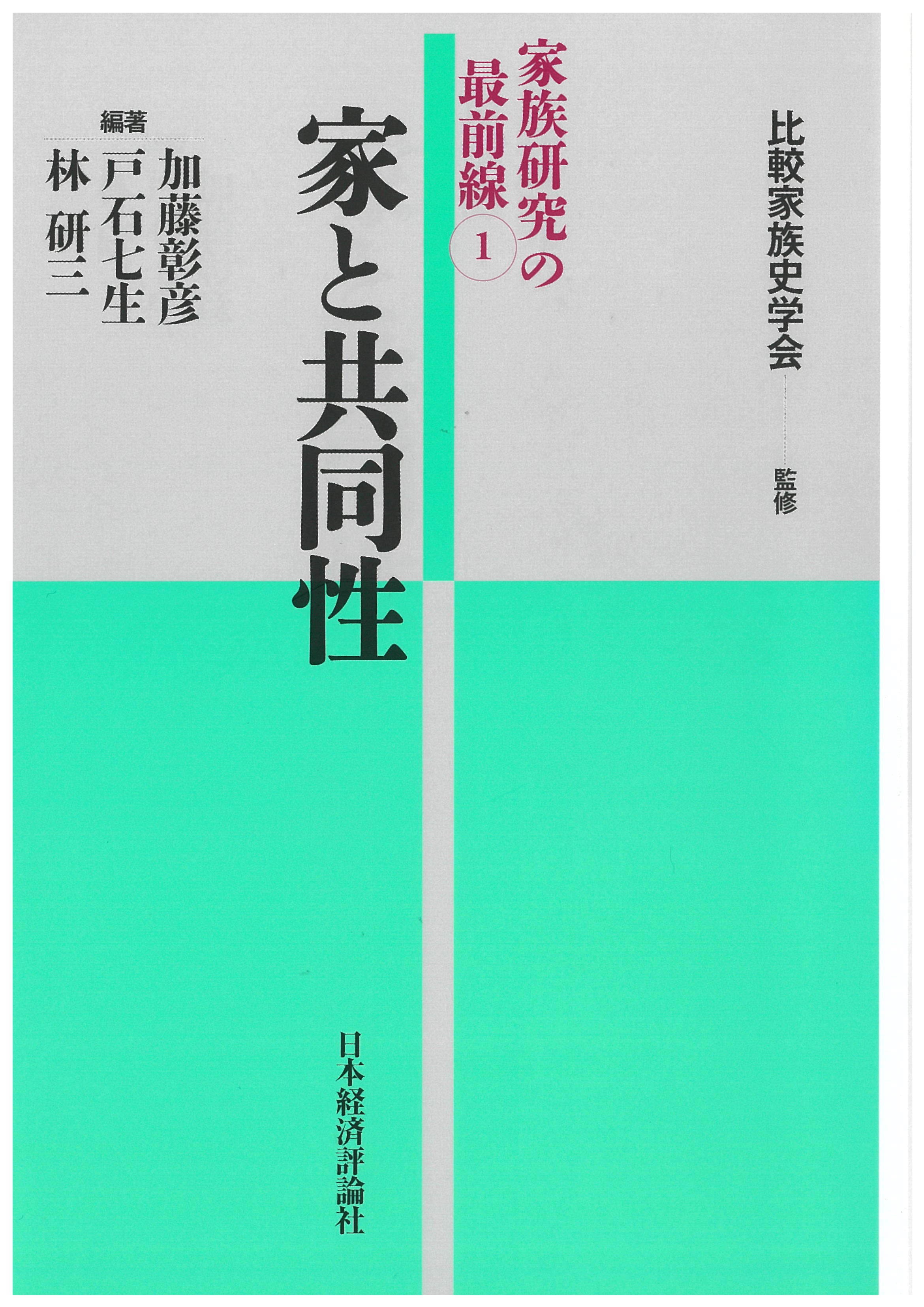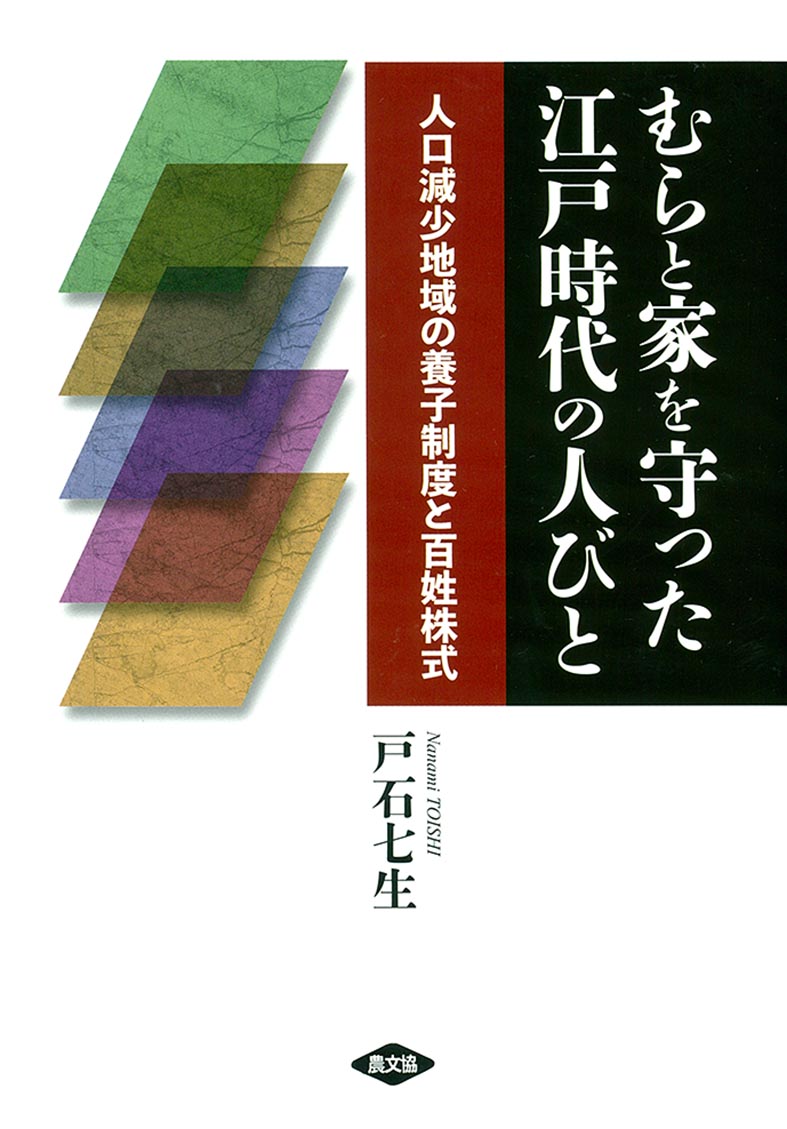
Title
The Forefront of Family Research Series of the Society for Comparative Family History, Vol.1 Ie to Kyodo-sei (The Ie Family System and Communality)
Size
384 pages, A5 format
Language
Japanese
Released
September, 2016
ISBN
978-4-8188-2439-3
Published by
Nihon Keizai Hyoronsha Ltd.
Book Info
See Book Availability at Library
Japanese Page
The aim of this book is to delineate the history and characteristics of the family in Japan over the long term and from the perspective of international comparison. Towards this end, apart from the more general introductory and concluding chapters, the book is divided into three parts dealing with evidential research. Part 1, focusing on the family during Japan’s medieval and early modern periods, discusses the establishment of the househouse (ie) and the time when this occurred. Part 2 discusses changes in the house in modern and contemporary times after the introduction of “modern” institutions. In other words, it deals with the question of whether or not the introduction of “modern” institutions, starting with the civil code, was a watershed for the household. Part 3 discusses characteristics of the Japanese house when it is compared with houses around the world. There are many books that have dealt with the Japanese house, but this book is unparalleled in its theoretical lucidity, the period covered by its observations, and the appropriateness of its objects of comparison.
In chapter 1 of Part 1 it is shown that in the Kinai region, where the house was first established, it had been established by the fifteenth to sixteenth centuries at the latest, including in the middle and lower strata of society. Chapter 2 describes the process whereby the house was established in the Kinai region and then in surrounding areas from the medieval to early modern period. Village organizations called miyaza, which managed both village festivals and village administration, played a major role in the establishment of the house. Chapter 3 describes how the house was established further afield in the Kantō region during the eighteenth century, when an important role was played by village subgroups consisting of five-house neighbourhood units. Chapter 4 describes how houses possessing the structure of stem families became established in the villages of northern and southwestern Japan during the nineteenth century.
Chapter 5, in Part 2, describes how the house developed further in the Kantō region during the transition from the early modern to modern period and there were established new customs such as family graves and procedures for handing over the position of head of a miyaza. Chapter 6 analyzes the transformation of the merchant house of Mitsui Echigoya into a business conglomerate. As a result of the exclusion of the branch families of employees from the consanguine head family of the Mitsuis and from the business, there developed a dual structure in the Mitsui conglomerate, consisting of the head family and branch families. Chapter 7 shows how the Meiji Civil Code introduced the principles of modern Western law (absoluteness and exclusiveness of individual ownership) and rejected the joint ownership of family assets, as a consequence of which many judicial precedents took on the task of bridging the resultant gap between the law and the realities of everyday life. Chapter 8 shows how house associations in villages on Shimokita Peninsula, thought to be old organizations, expanded in the late twentieth century in conjunction with the decreasing size of families. This points to the importance of subgroups that complement the house and the village and to the need to observe the dynamism of village structures when seeking to understand the house and the village.
Chapters 9 and 10, in Part 3, depict the nature of the house in contemporary patrilineal societies. In Taiwan, the economic support of the wife’s family plays an important role in managing a house, and not only blood relations but also matrimonial relations are important. Families in Korea resemble those in Japan insofar that the house units are stem families, but there is a major difference in that there exist strong ties between agnate relations that transcend the village. Chapter 11 shows that in nineteenth-century India family assets belonged to both the village and the house, and there had evolved a type of house similar to that in Japan. Chapter 12 shows that in modern Sweden, where it was difficult for even large-scale farmers to build up family assets without making use of loose networks of relatives, there were established at the level of petty farmers houses consisting of conjugal families, and the primary factor behind this was the spread of part-time farming that accompanied industrialization.
(Written by TOISHI Nanami, Associate Professor, Graduate School of Agricultural and Life Sciences / 2020)



 Find a book
Find a book


 eBook
eBook